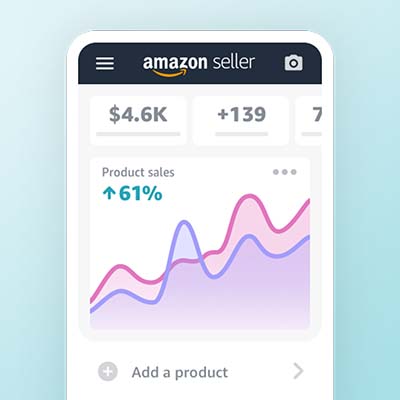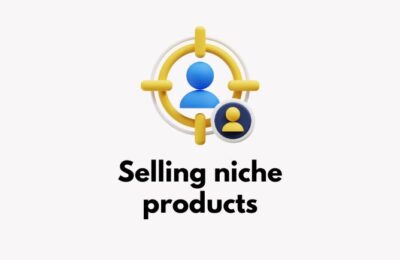Amazon retail arbitrage is a business model where individuals purchase products from brick-and-mortar stores or online shops and resell them on Amazon for a profit. This model leverages price differences between various markets to capitalize on discounted or undervalued products. As a leading global online marketplace, Amazon provides an excellent platform for retail arbitrage. This article will delve into the concept, mechanics, and strategies of Amazon retail arbitrage, offering a comprehensive guide for those interested in this entrepreneurial venture.

Understanding Retail Arbitrage
Retail arbitrage involves buying products at a lower price from one market and selling them at a higher price in another. This can happen in physical stores or online. For example, you might find a product on clearance at a local store and notice that it sells for a much higher price on Amazon. By purchasing the discounted item and listing it on Amazon, you can potentially make a profit from the price difference.
The essence of retail arbitrage lies in recognizing the discrepancies in pricing between various retail outlets and online marketplaces. Often, stores may discount items to clear out inventory, make space for new products, or react to seasonal demand shifts. For the savvy entrepreneur, these discounts represent opportunities to buy low and sell high. Successful arbitragers keep a keen eye on these market movements and continuously scout for lucrative deals, sometimes even traveling to multiple locations to maximize their inventory.
How Does Amazon Retail Arbitrage Work?
Step-by-Step:

Source: https://m.media-amazon.com/images/G/01/sell/images/ogp/tools-app-xs.jpg
- Research and Product Selection: The first step in Amazon retail arbitrage is identifying products that can be bought at a lower price and sold for a profit on Amazon. Tools like the Amazon Seller App, CamelCamelCamel, and Keepa can help track price histories and identify profitable products.
- Visit Local Retailers: Start by visiting local stores such as Walmart, Target, and Home Depot. Head to the clearance sections and scan products using the Amazon Seller App. This app will show you the current selling price on Amazon, the fees involved, and the potential profit.
- Utilize Online Resources: Websites like BrickSeek can help you find clearance items at local stores. Additionally, use Keepa and CamelCamelCamel to track price histories and set alerts for price drops on Amazon.
- Calculate ROI: Ensure that the products you select offer a reasonable return on investment (ROI). A common benchmark is an ROI of at least 50%, meaning if you buy a product for $10, it should sell for at least $15 after fees.
- Purchasing Products: Once you’ve identified a potential product, you purchase it from a retail store or online shop. This might involve visiting clearance sections, using coupons, or taking advantage of sales events.
- Bulk Purchases: When you find a profitable product, consider buying in bulk to maximize your profit margins. However, start small to test the market demand.
- Leverage Coupons and Discounts: Use apps and websites like Honey, Rakuten, and RetailMeNot to find additional coupons and cash-back offers. These can further reduce your purchase costs and increase your profit margins.
- Plan Your Shopping Trips: Organize your trips to multiple stores in one go to save time and travel costs. Weekends and holidays often have the best clearance deals.
- Listing on Amazon: After acquiring the products, you list them on Amazon. This involves creating a detailed product listing with images, descriptions, and pricing information. It’s crucial to ensure your listing is competitive and attractive to potential buyers.
- Optimize Listings: Use high-quality images, detailed descriptions, and relevant keywords. Ensure your product title is clear and includes important information such as brand, model, and key features.
- Competitive Pricing: Set a competitive price that covers your costs, includes a profit margin, and remains attractive to buyers. Use repricing tools to automatically adjust your prices in response to competitors.
- Product Reviews: Encourage customers to leave positive reviews by providing excellent customer service and following up with buyers.
- Shipping and Fulfillment: There are two main fulfillment options for Amazon sellers: Fulfillment by Merchant (FBM) and Fulfillment by Amazon (FBA). With FBM, you handle storage, packaging, and shipping. With FBA, Amazon takes care of these tasks for you, but you have to ship your products to an Amazon fulfillment center.
- Start with FBM: If you’re just starting out, you might want to handle fulfillment yourself to save costs. This involves storing inventory at home, packaging orders, and shipping them directly to customers.
- Transition to FBA: As your business grows, consider switching to FBA. This allows Amazon to handle storage, packaging, shipping, and customer service, freeing up your time to focus on sourcing products. FBA also makes your products eligible for Amazon Prime, which can increase sales.
- Shipping Tips: For FBA, ensure your products are properly labeled and packaged according to Amazon’s guidelines. Use discounted shipping rates available through Amazon’s partnered carriers.
- Managing Sales and Inventory: After listing your products, you need to monitor sales, manage inventory, and handle customer service. This involves keeping track of stock levels, replenishing inventory as needed, and responding to customer inquiries.
- Inventory Management: Use inventory management software to keep track of stock levels and sales trends. This helps prevent stockouts and overstock situations.
- Sales Analysis: Regularly analyze your sales data to identify top-performing products and adjust your sourcing strategy accordingly. Look for patterns in customer behavior and seasonal trends.
- Customer Service: Provide prompt and courteous responses to customer inquiries and issues. Good customer service can lead to positive reviews and repeat business.
Comparing Retail Arbitrage to Other Business Models on Amazon
Retail arbitrage involves purchasing products at a lower price from retail stores and reselling them on Amazon for a profit. This model requires minimal initial investment and allows sellers to start quickly by leveraging existing products. However, it also comes with challenges such as price fluctuations and competition.
Private Label
This model involves creating your own product label or brand, usually by modifying an existing product. Private labeling is a popular method on Amazon and can be highly profitable, but it requires significant initial investment. Sellers need to invest in product design, branding, and marketing. The advantage of private labeling is the ability to build a unique brand and create a loyal customer base.
Wholesale
Wholesale involves purchasing products in bulk directly from manufacturers or authorized distributors rather than retail stores. This model also requires substantial start-up capital. Wholesale is more sustainable as it allows for consistent replenishment of inventory and positions the seller as an authorized reseller, reducing the risk of issues like inauthentic claims. It provides a steady business model with predictable supply chains and often better profit margins due to bulk purchasing.
Dropshipping
In dropshipping, the seller lists products on Amazon, but the actual inventory is held by a manufacturer or supplier. When a customer orders, the supplier ships the product directly to the customer. This model requires minimal upfront investment since there’s no need to purchase inventory in advance. However, it often results in lower profit margins and less control over the fulfillment process.
Handmade
Handmade involves creating or crafting your own products to sell on Amazon. This model allows for complete control over the product quality and design, catering to niche markets and unique items. However, it can be time-consuming and requires significant effort in production and scaling.
Advantages of Amazon Retail Arbitrage
Low Barrier to Entry: Amazon retail arbitrage requires minimal initial investment compared to other business models. You can start with a small budget and gradually scale up as you reinvest your profits.
This model is particularly attractive for individuals looking to start a side hustle or those new to e-commerce. The initial investment can be as low as a few hundred dollars, allowing you to test the waters without significant financial risk. As your business grows, you can reinvest profits into more inventory and tools to scale your operations.
Flexibility: This business model offers significant flexibility. You can work from anywhere, set your own hours, and choose which products to sell based on market trends and personal interests.
Flexibility extends beyond just working hours; it also includes the freedom to experiment with different product categories, sourcing strategies, and sales techniques. This adaptability allows you to pivot quickly in response to market changes, consumer preferences, and emerging trends, ensuring your business remains relevant and profitable.
Access to a Large Market: Selling on Amazon gives you access to a vast customer base, increasing your chances of making sales. Amazon’s reputation and established logistics network also boost customer trust and satisfaction.
Amazon’s global reach means your products can be seen by millions of potential customers. This vast audience provides a level of exposure that would be challenging to achieve independently. Additionally, Amazon’s established logistics and customer service infrastructure enhance buyer confidence, making it easier for new sellers to gain traction.
Challenges of Amazon Retail Arbitrage
Competition: The popularity of retail arbitrage means there is significant competition. To succeed, you need to constantly find new and profitable products and stay ahead of market trends.
High competition can lead to price wars, reducing profit margins. Staying competitive requires continuous learning, market research, and leveraging technology to identify opportunities faster than your competitors. Building a unique selling proposition (USP) for your listings can also help differentiate your products from others.
Price Fluctuations: Product prices can fluctuate due to various factors, such as supply and demand, seasonal trends, and market saturation. These fluctuations can impact your profitability.
Price volatility is a significant risk in retail arbitrage. To mitigate this, consider diversifying your product portfolio across different categories and price points. Additionally, keeping abreast of market trends and using predictive analytics can help anticipate price changes and adjust your strategies accordingly.
Amazon’s Policies: Amazon has strict policies and guidelines for sellers. Violating these policies can result in account suspension or termination. It’s crucial to stay informed about Amazon’s rules and ensure compliance.
Regularly reviewing Amazon’s terms of service and participating in seller forums can help you stay updated on policy changes. Compliance not only prevents account issues but also ensures a smoother selling experience. Consider seeking legal advice or consulting with experienced sellers to navigate complex regulations effectively.
Time-Consuming: While retail arbitrage can be profitable, it requires time and effort. Sourcing products, managing listings, and handling customer service can be time-consuming tasks.
Efficient time management is essential. Utilizing automation tools for inventory management, repricing, and customer service can significantly reduce the workload. Additionally, outsourcing certain tasks, such as bookkeeping or product research, can free up your time to focus on strategic growth initiatives.
Strategies for Success in Amazon Retail Arbitrage
Thorough Research: Invest time in researching products and markets. Use tools like Keepa, CamelCamelCamel, and the Amazon Seller App to track price histories and identify trends.Comprehensive research involves more than just price tracking. Analyze customer reviews to understand common pain points and preferences. Explore niche markets where competition may be lower but demand is still significant. Developing a robust research methodology will help you consistently identify profitable opportunities.
Focus on High-Demand Products: Look for products that have a high demand and low competition. This increases your chances of making sales and reduces the risk of holding unsold inventory. Tools like Jungle Scout and Helium 10 can provide insights into product demand and competition levels. High-demand products often belong to categories such as electronics, toys, and home goods, but trends can shift, so continuous monitoring is essential. Balancing high-demand products with niche items can provide a stable income stream.
Build Relationships with Retailers: Establishing good relationships with local retailers can give you access to exclusive deals and discounts, helping you source products at lower prices. Networking with store managers and employees can lead to insider information about upcoming sales or clearance events. Joining loyalty programs and taking advantage of bulk buying discounts can further reduce costs. Strong relationships with suppliers can also lead to better terms and conditions, enhancing your overall profitability.
Optimize Listings: Ensure your product listings are optimized for Amazon’s search algorithm. Use relevant keywords, high-quality images, and detailed descriptions to attract potential buyers. Listing optimization involves more than just keywords. Pay attention to product titles, bullet points, and backend search terms. High-quality images with multiple angles and lifestyle shots can significantly increase conversion rates. A/B testing different listing formats and descriptions can help identify what resonates best with your audience.
Leverage FBA: Using Fulfillment by Amazon (FBA) can save you time and effort. Amazon handles storage, packaging, shipping, and customer service, allowing you to focus on sourcing products and growing your business. While FBA comes with fees, the benefits often outweigh the costs. Prime eligibility, improved customer service, and streamlined logistics can lead to higher sales volumes and better reviews. Monitoring FBA fees and understanding the cost structure is crucial to maintaining profitability.
Is It Possible to Scale a Retail Arbitrage Business?
Scaling a retail arbitrage business on Amazon is indeed possible, though it requires strategic planning and execution. Many sellers start with retail arbitrage and eventually expand into other models such as private label or wholesale.
Reinvest Profits: As you begin to see profits, reinvesting them into your business can help you buy more inventory, invest in better tools, and expand your product offerings. This reinvestment is crucial for scaling operations gradually.
Streamline Operations: Utilize automation tools for tasks such as inventory management, repricing, and order fulfillment. Streamlining these processes can save time and allow you to handle more volume without becoming overwhelmed.
Diversify Product Lines: Expanding into new product categories can reduce the risk associated with price fluctuations and competition in a single niche. Diversification also opens up new revenue streams and markets.
Transition to Private Label: Many successful retail arbitrage sellers eventually move into private labeling. This transition allows you to create your own brand, which can lead to higher profit margins and customer loyalty. Private labeling requires a larger initial investment but offers greater control over the product and branding.
Wholesale Expansion: Another path for scaling is moving into wholesale. By purchasing products in bulk from manufacturers or distributors, you can secure better pricing and ensure a consistent supply of inventory. This model is more sustainable and can be scaled more efficiently than retail arbitrage alone.
Build a Team: As your business grows, consider hiring employees or outsourcing certain tasks to virtual assistants. Building a team can help you manage the increased workload and focus on strategic growth initiatives.
Conclusion
Amazon retail arbitrage is a viable and potentially lucrative business model for entrepreneurs looking to capitalize on market inefficiencies. By understanding the process, leveraging the right tools, and implementing effective strategies, you can build a successful retail arbitrage business on Amazon. While there are challenges to overcome, the flexibility, low barrier to entry, and access to a large market make it an attractive option for many aspiring sellers. Through diligent research, continuous learning, and strategic execution, retail arbitrage can provide a profitable and sustainable income stream in the dynamic world of e-commerce. Furthermore, scaling a retail arbitrage business is achievable by reinvesting profits, streamlining operations, diversifying product lines, and eventually transitioning into private label or wholesale models, paving the way for long-term success and growth.





